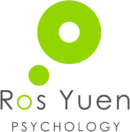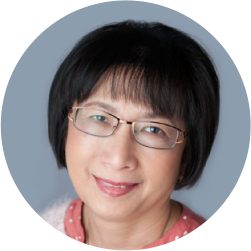I. What is family therapy and how is it different from individual counselling?
Family relationship therapy (FT) is different from individual counselling in many ways. Individual therapy has its roots in traditional psychoanalysis. Family therapy is the clinical application of Family Systems Theory (FST). FST, in turn, draws from psychoanalysis, General Systems Theory (GST), and Cybernetics.
The earliest family therapists applied GST to the family unit by defining the family unit as a complex social system, in which members interact to influence each other’s behaviour. They also applied the principle of cybernetics which is the study of feedback mechanisms in self-regulating systems whose ultimate goal is stability.
Essentially, family therapists view the family unit as a whole rather than as a collection of individual persons occupying a space. These individual family members interact in such a way that any change in one individual will influence the entire system and may even lead to changes in other members. FST recognises that the family plays a key role in both emotional and physical well-being across the life course since most individuals have some contact with a “family” unit throughout their lives.
Families often influence day-to-day lives; families come together to celebrate and to help each other through crises. The isolation strategy necessitated by the Covid pandemic has highlighted the irreplaceable value of family support and the rise of mental illness in its absence. FST emphasises the idea that families are continuous entities with rules, beliefs, and values that shape members’ lives and choices over time in very important ways.
Family therapy has a non-pathology orientation in contrast to the medicalised pathology-defectiveness-cure orientation of traditional individual therapy. Its focus prioritises the patterns of interaction over the subject matter of the interaction between members, in other words, how members conflict and not so much what they conflict about. Family therapy states that patterns of interaction between family members create, maintain, and perpetuate both problem and nonproblematic behaviours. The clinical emphasis is on identifying and interrupting repeating sequences of behavioural exchanges of which the problem behaviour is a part. According to this approach, the problem behaviour will dissipate when these problem-perpetuating patterns are successfully interrupted.
II. Models of Family Therapy
What a therapist does in family therapy may differ, depending on the theoretical framework underpinning the intervention. Nonetheless, all family therapists hold in common the recognition that a family is a system with many interconnected parts and that family dynamics need to be addressed to be adaptive and healthy.
There are four main models of family therapy:
A. Structural family therapy
Structural family therapy was created by Salvador Minuchin who theorised that the family structure is responsible for its problems. Minuchin believed a family needs to maintain a certain hierarchy and boundaries to remain healthy. He believed that families would triangulate which is using a third person to cover up issues between two family members. An essential tool of structural family therapy is for the family and the therapist to construct a structural map where the boundaries and hierarchies of the family are examined. The therapist might then instruct the parents to take a more assertive role and show a united front to their children. Most of the work is done in the therapy session and therefore, requires all to attend.
B. Bowenian Intergenerational Family Therapy
Murray Bowen developed one of the most comprehensive theories of family therapy. He realised that the history of our family creates a template which shapes the values, thoughts, and experiences of the next generation as well as to how that generation passes these beliefs to the next generation. He believed that the goal of therapy is differentiation, both of the self and from the family. Undifferentiated people struggle to separate feelings from thoughts. They have difficulty separating their own from other people’s feelings and look to family to define their opinions about day-to-day matters and interpret their experiences. Differentiation is the process of freeing oneself from one’s family’s dynamics to define oneself. Bowen believed that differentiation is an individual process and is willing to work with the individual. He believed that family dynamics often resided in triads (triangles) and the therapist’s task is as a coach and educator. It means assisting the person to reflect on a conflicted interaction, realise his or her role in it, and then choose a different response in the future. A genogram is the essential tool used to identify intergenerational family dynamics.
C. Strategic
Milton Erickson and Jay Haley believed that the family maintains problems through patterns of responses in family interactions. The therapist’s task is to assist the family to change behaviour patterns through new responses to behavioural problems. Unlike structural family therapy, most of the work is done outside the therapy sessions. Paradoxical intention is the main technique where the therapist will ask the family to keep doing what they have been doing in the hope that they will rebel and try something different. This technique is known as “prescribing the symptom”.
D. Systemic (Milan Model)
Systemic therapists posit that a family member develops or maintains symptoms in an effort to cope with the behaviour of other members of the family. The therapist’s goal is for family members to see and reflect on existing family processes. Circular questioning is the main technique used to expand members’ explorations and reflections. For instance, the therapist may ask the family about the impact of memory loss of an aging parent:
“Who is most affected by your mother’s dementia?”
“Was anything different for you before, compared to now?”
“How does your father respond when your mother can’t remember? Who else reacts? How do they react?”
Non-family Members
The definition of a family has changed substantially over the last 50 years. There may be a close friend who is part of daily family interactions. It may be critical to involve this person in conceptualising the family dynamics. The mobile phone and social media have introduced other significant persons into the family space with ease. It is essential that today’s therapist adds digitalised interactions to their conceptual maps.







